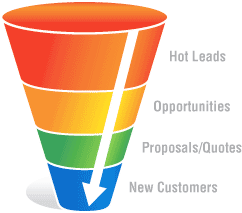Design matters. You may have the best product, technology or service but if the packaging sucks, it’s a reflection on the product, technology or service. and you. By packaging I don’t mean the physical packaging, although if you sell a product that is going to be on a shelf or shipped, consider the packaging very carefully.

Twelve South Bass Jump Packaging
Packaging is not just an expense line item that can be marginalized and reduced to the lowest cost alternative…like plastic clamshell packages* – if you ship a product in plastic clamshell packaging, you are evil. Maybe you aren’t evil, but you are causing endless frustration to your customers at a time when they should be excited to have your product in hand and relish the “un-boxing”**
When you are selling something to someone, the design matters. Regardless of who you are selling to.
“….uh, Pete, you must be mad! Engineers and accountants don’t care about design of the packaging or pretty logos.”
You might be right person reading this blog, but ask a CTO if they care about the design of your architecture, ask a CFO if well designed revenue models are important. The importance of design is not limited to the marketing department and must be considered throughout your organization. That is true of services business as well. If you run a consulting firm, methodology is designed. It’s even branded (six sigma). Certifications are a part of the design of your business as well.

Have your designed your sales funnel? or has it defined the way you do business?
This brings me to designing for revenue. Everything from your brand, messaging, sales team, methodologies and everything else related to how customers become customers, needs to be designed. As in a good architecture, design starts with purpose. What is the purpose of what you are trying to design? In the case of a revenue model or sales and marketing machine, that purpose better be revenue, customers or market share. Before you venture and migrate current processes to the cloud…consider the opportunity presented for a re-design.
Just as good graphic designers know how to mix various design elements to be effective, you should consider how you design your revenue model and sales engine. Some things just don’t make for good design. Investing heavily in search engine optimization before your website is effective. Hiring sales reps before you know your go-to-market strategy and can provide valid leads. Training reps before you know your sales cycle, process or methodology. Hopefully you won’t make these surprisingly common mistakes. It’s a mark of bad design.
I’m always interested in
talking to people about how they view the importance of design in their business. More often than not all the pieces of the sales, marketing and business development plans don’t come together under a well executed design. -Peter

Larry attempts to open a vacuum sealed 'clamshell' package.
* evil, lazy and environmentally irresponsible packaging that 90% of the time frustrates the customer and in some cases harms them. I have literally cut myself opening a plastic clamshell package. Larry David had a whole bit dedicated to plastic clamshell packaging on Curb Your Enthusiasm
**very strange social phenomenon that says a lot about our society. thousands of people actually post videos of themselves ‘un-boxing’ recent purchases as if it is a religious experience. I haven’t figured out why, to be honest, I haven’t tried. If you are sell a product that is heavily featured in
‘unboxing’ videos, then congratulations. You have created a product that people feel passionately about. Here’s an
Apple iPad unboxing video if you have no idea what I am talking about.




